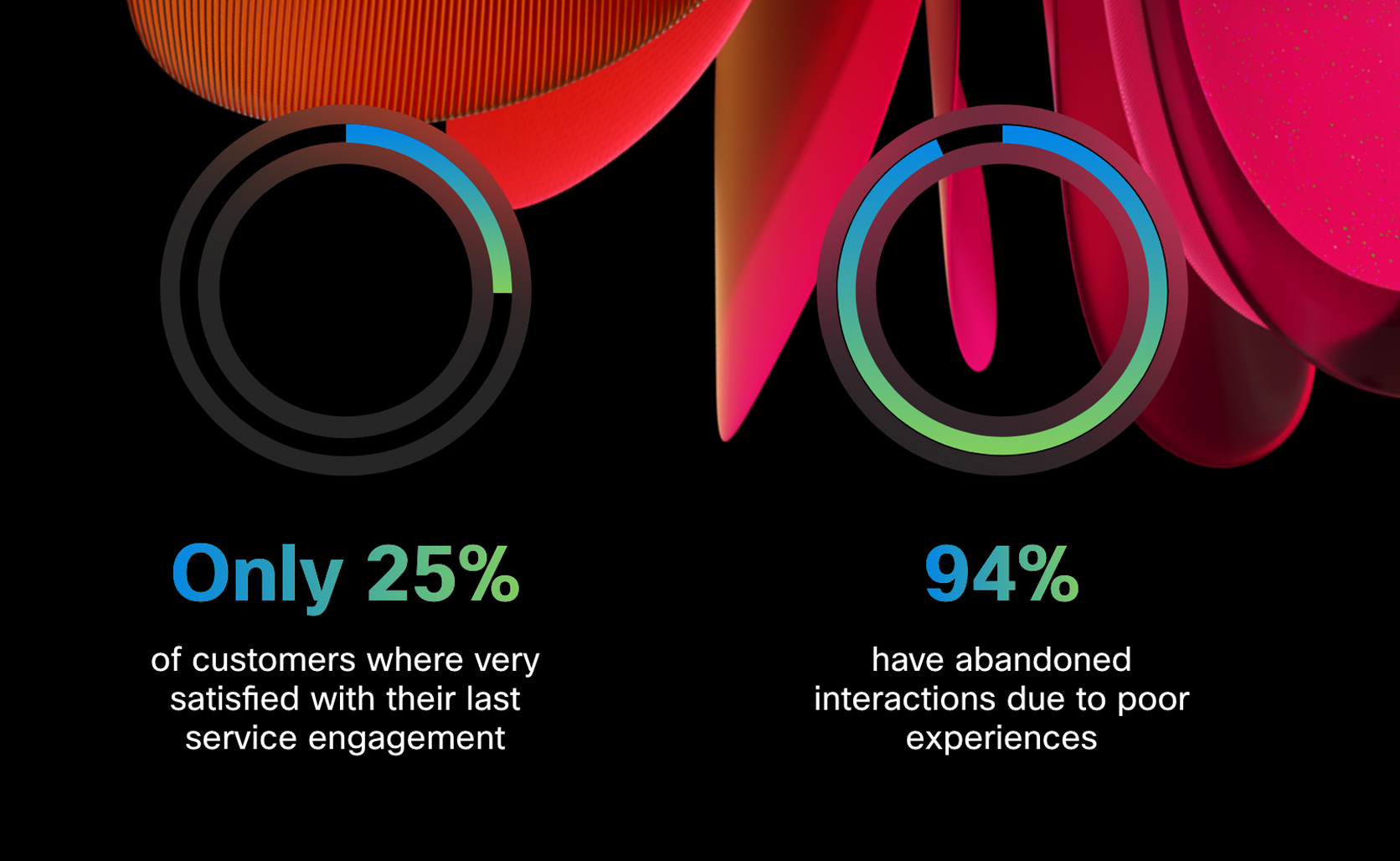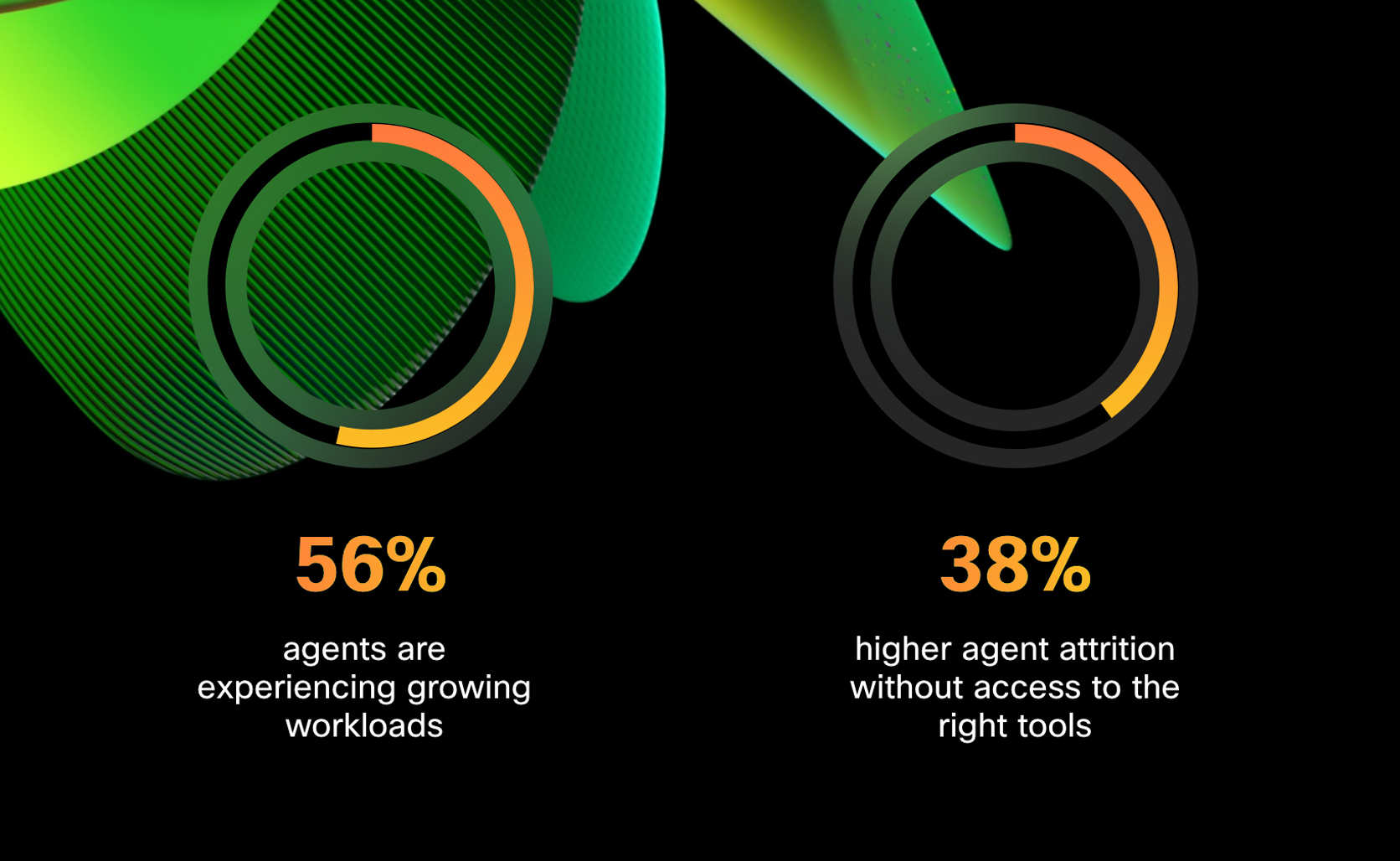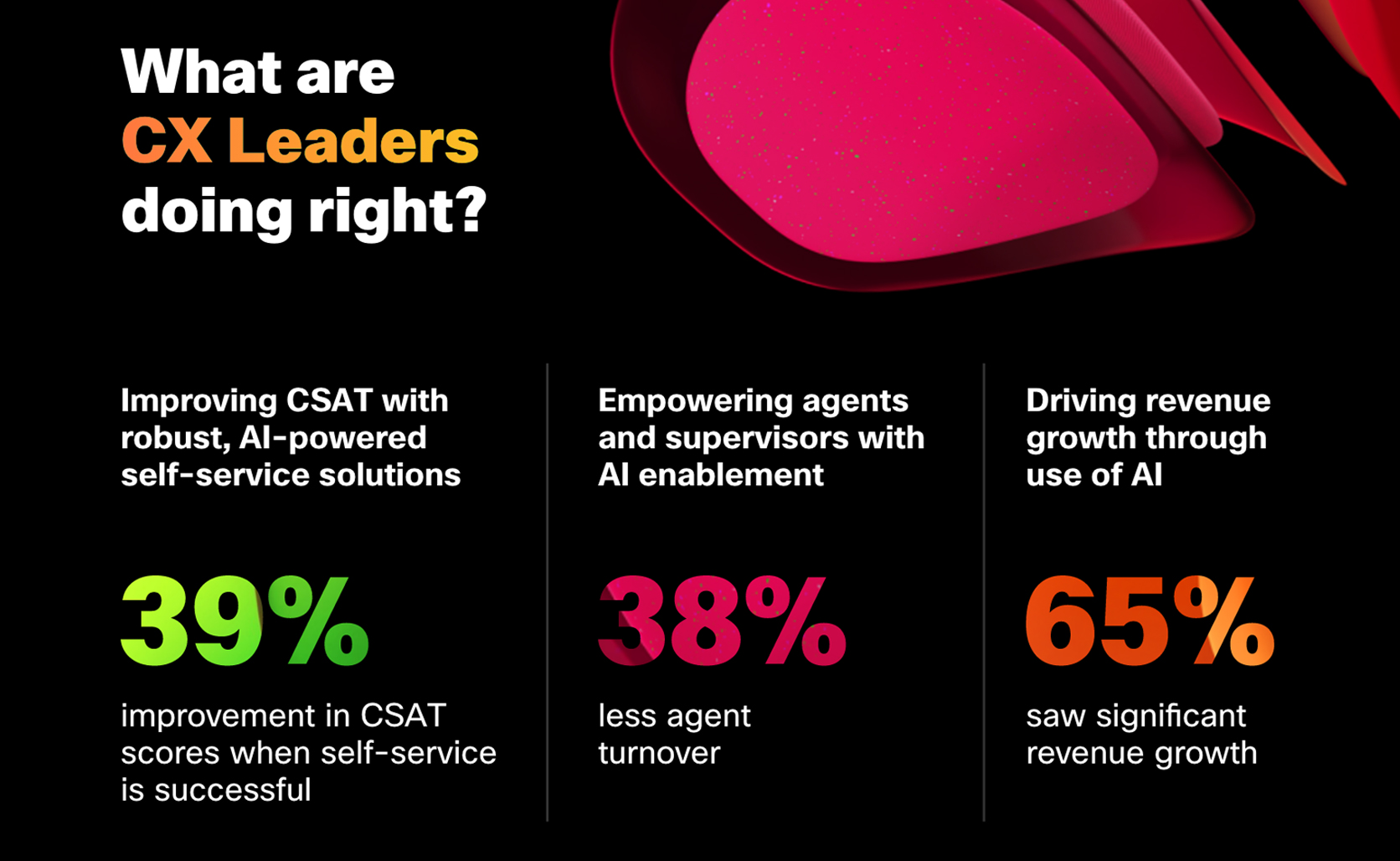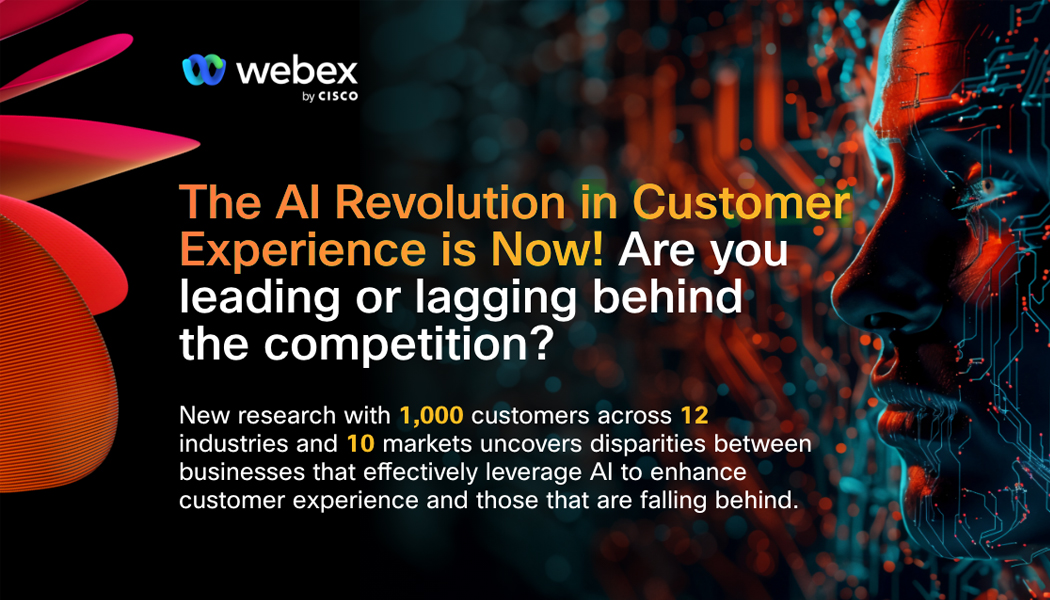Customer experience solutions have skyrocketed to new heights, fueled by cutting-edge technology. The question is, will your organization ride this wave to emerge as an industry leader, or will you be left floundering in the wake of progress?
Even with advanced technology, customer satisfaction with the experience is stagnant. New technology has enabled efficiencies but has also created challenges like difficult-to-execute self-service experiences and overworked agents tasked with managing multi-channel experiences with little support. Even with better technology, customer satisfaction (CSAT) is declining rather than improving.
AI gives us the tools to manage increasingly complex customer journeys. It is a pivotal path forward for handling the growing number of channels customers prefer to communicate. It also gives organizations the ability to create more natural customer interactions. The real secret sauce is when self-service moves from being informational to actually being able to solve customer issues—which is made possible with service orchestration.
We wanted to learn more about the state of customer experience from the lens of the customer, agents, and the business. We surveyed 1,000 customer experience leaders across 12 industries and 10 markets and found a significant impact in three critical areas of impact: customers, agents, and the business.
Global Customer Experience Survey results
Customer Impact: 55% of Customers Avoid Self Service
Virtual assistants and self-service are not new to the industry. We’ve had interactive voice recordings for a long time, which we’re all familiar with. These don’t do justice to what self-service can be.
According to our survey shows customers want to use self-service, but it’s not working for them. Our study found that 55% of customers avoid self-service that feels rigid and unhelpful and 63% of companies rely primarily on website FAQs to deliver self-service.

Agent Impact: high attrition rates without access to AI enablement tools
Agents lack the essential tools for effective support. A staggering 1 in 3 agents report lacking the customer context needed to deliver an ideal customer experience. Organizations without access to AI tools report higher agent attrition rate than those implementing AI into the customer experience journey.

Business Impact: 3 in 4 businesses have as many as 10 disparate customer data systems
The inability to optimize technology and data significantly affects organizations. Of the businesses surveyed, 75% have 3 or more siloed customer data systems, resulting in a 48% longer resolution times for their customers, and 50% lower CSAT.

The key difference between organizations seeing improvement to these long-standing challenges is their use and deployment of AI to support customers, agents, and the overall business.
Our findings pinpointed three critical metrics that are negatively impacting customers, agents, and businesses: 1) Customer Satisfaction (CSAT) is lagging, 2) Agent turnover is high, and 3) customer churn is increasing.
These are significant challenges that have been hard to overcome. However, these are also the most significant areas of opportunity to improve customer experience with AI.
Introducing Webex AI Agent – the future of customer experience
What if we could leverage generative AI and combine it with our expertise in conversational intelligence to make self-service feel human, helpful, and efficient? And, what if that self-service experience was so scalable, your customers find quick resolution to issues, your agents would no longer be overworked, and your CSAT scores skyrocket?
Now, it’s possible.
We call it the Webex AI agent.
It is a self-service concierge that combines conversational intelligence and generative AI to eliminate customer frustrations plaguing experience solutions. Not only can our AI Agent have natural-sounding conversations, but it can also pivot the conversation and follow along based on interruptions, corrections, or changes in subject. It’s as easy as talking to a friend.
The AI Agent also provides the intelligence and insights agents and businesses need to lead the AI game. It has back-office integration with popular applications that help organizations provide seamless experiences for an enormous variety of customer needs.
With this launch, we have left the days of old, robotic-sounding service bots behind and moved into a brighter future.
AI Leaders vs. Laggards: What does it take to be an AI leader?
Our survey used a maturity model approach across categories of Laggards, Followers, Pacesetters, and Leaders. We found common characteristics between organizations that experience lower customer satisfaction and higher agent attrition and, alternatively, those that experience the opposite.
What is driving this gap between organizations that deliver optimal customer experience and those that do not?
We found that 76% of organizations that use AI have seen tangible business results that have positioned them as leaders in customer experience—and the AI divide between leaders and laggards only continues to grow.
Based on our results, those leading in customer experience with AI are implementing it across the customer journey and are seeing significant improvement in key metrics.

Customer impact
AI-driven self-service solutions are more human, proactive, and effective.
- Leaders saw CSAT scores improve by 92% with AI self-service, compared to AI laggards with less than 50% improvement.
- 61% of leaders use AI proactive outreach, while only 6% of laggards deployed the same.
- 84% of AI leaders used AI to reduce hold times, while AI laggards saw no reduction.
The impact on overall customer satisfaction and net promoter scores (NPS) between leaders and laggards was stark.
- AI leaders saw customer satisfaction scores with extremely satisfied ratings of 70%, with laggards having only 2% of customers with the same rating.
- NPS for laggards was 43. In comparison, AI leaders saw an NPS of 70.
Agent impact
Real-time workflow automation and orchestration with AI significantly enhances agent performance. As AI Assistant adoption grows, we are seeing promising impacts on both speed to resolution and Agent engagement.
- 73% of agents with AI assistance in AI leader organizations compared to only 10% of AI laggards.
- Agent workloads have decreased in organizations that have deployed and adopted AI. By comparison, workloads without widespread AI adoption have increased by 56%.
The results are stark.
- Agent efficiency is 68% for AI leaders and less than 1% in organizations that have not adopted AI.
- 24% of leading organizations are providing AI assistance to augment agent capabilities and experience.
Business impact
With AI designed into every aspect of customer experience solutions with our AI Agent, it’s easy to integrate disparate back-end systems, like CRMs, that contain critical data and create workflows that pull information into the contact center for resolution.
- 42% of leader organizations and 55% of laggard organizations had 4 or less disparate data systems
- 70% of leaders and only 46% of laggards are using cloud based contact centers
- 69% of leaders are leveraging CPaaS (Communications Platform as a Service) for communication orchestration, while only 23% of laggards are doing the same
The impact on business includes:
- 85% improvement in customer churn for leaders and only 30% for laggards.
- 65% of leaders cited a significant increase in revenue with AI usage. Less than 1% of laggards reported a revenue increase.
The goal of our AI solutions is to empower people with the breadth and depth of experience that AI can provide to add to the richness of the human experience. Our Webex AI Agent is doing just that, taking customer experience to the next level.





